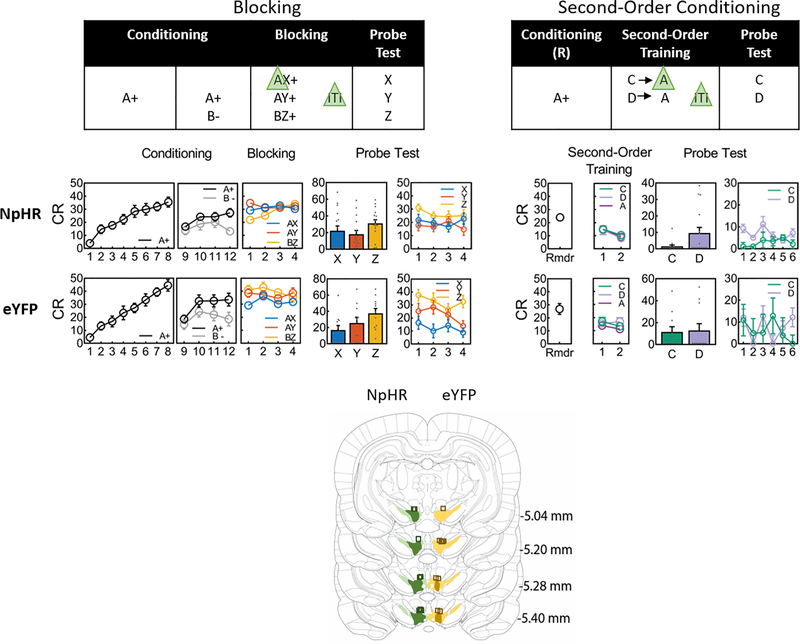Extended Data Fig 2.
During Conditioning, responding to A but not B increased across days, and this responding was higher for A compared to B. During Blocking, responding to the control compound (DZ) was lower compared to blocking compound (AX, AY) at the start, but equivalent by the end of training, with no difference between the blocking compounds. Responding during the first trial of the Probe Test showed evidence of blocking (X and Y vs. Z) and no difference between the blocking cues (X vs Y, see Fig 3 legend for statistics). Differences disappeared on subsequent trials. Responding to the retrained cue A increased across reminder (Rmdr) trials while that to C (i.e., C→A trials) and D (i.e., D→A trials) did not differ across second-order training. On Probe Test, responding to C was lower compared to D (see Fig 2 legend for statistics) on the first trial as well as across the entire test. eYFP: The pattern of data obtained for the NpHR rats was similar to that obtained for the eYFP rats with one critical exception: there was no difference between C and D on Probe Test in the eYFP rats. Some data are reproduced from Figures 2 and 3 in the main text. CR or conditioned responding is percent time spent in the magazine during the last 5s of the cue. Drawings to the left illustrate the extent of expression of NpHR and eYFP and location of fiber tips within VTA.

